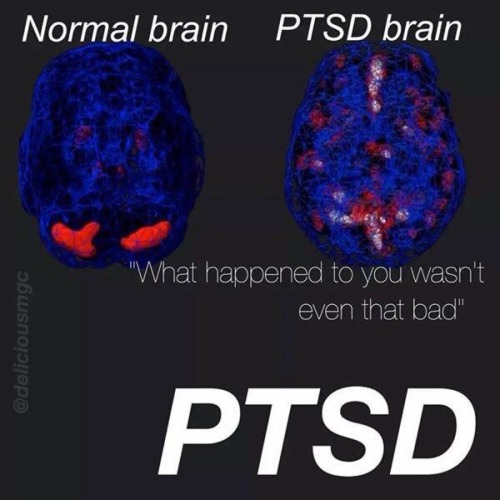Gravity, Who Needs It
Gravity, who needs it
Houston TX (SPX) Nov 20, 2015 What happens to your body in space? NASA’s Human Research Program has been unfolding answers for over a decade. Space is a dangerous, unfriendly place. Isolated from family and friends, exposed to radiation that could increase your lifetime risk for cancer, a diet high in freeze-dried food, required daily exercise to keep your muscles and bones from deteriorating, a carefully scripted high-tempo Full article
More Posts from Curiositytherover and Others

Turning sunlight into clean fuel is now cheap and simple
We’re With You When You Fly

Did you know that “We’re With You When You Fly”? Thanks to our advancements in aeronautics, today’s aviation industry is better equipped than ever to safely and efficiently transport millions of passengers and billions of dollars worth of freight to their destinations. In fact, every U.S. Aircraft flying today and every U.S. air traffic control tower uses NASA-developed technology in some way. Here are some of our objectives in aeronautics:
Making Flight Greener

From reducing fuel emissions to making more efficient flight routes, we’re working to make flight greener. We are dedicated to improving the design of airplanes so they are more Earth friendly by using less fuel, generating less pollution and reducing noise levels far below where they are today.
Getting you safely home faster

We work with the Federal Aviation Administration to provide air traffic controllers with new tools for safely managing the expected growth in air traffic across the nation. For example, testing continues on a tool that controllers and pilots can use to find a more efficient way around bad weather, saving thousands of pounds of fuel and an average of 27 minutes flying time per tested flight. These and other NASA-developed tools help get you home faster and support a safe, efficient airspace.
Seeing Aviation’s Future

Here at NASA, we’re committed to transforming aviation through cutting edge research and development. From potential airplanes that could be the first to fly on Mars, to testing a concept of a battery-powered plane, we’re always thinking of what the future of aviation will look like.
Make sure to follow us on Tumblr for your regular dose of space: http://nasa.tumblr.com

Area of a circle
Interactive version:
http://www.malinc.se/math/geometry/circleen.php
Hitchhiking a Ride to Space
Have you ever packed for a long trip with a friend and ran out of space in your suitcase? Maybe your friend was nice and let your spare items hitchhike a ride in their bag? The following science experiments are doing something similar on our Space Launch System rocket.

Our Space Launch System (SLS) will be the most powerful rocket we’ve ever built and will enable astronauts in the Orion spacecraft to travel deeper into the solar system. This advanced launch vehicle will launch astronauts to an asteroid and eventually to Mars, while opening new possibilities for other payloads including robotic scientific missions to places like Mars, Saturn and Jupiter.

The primary goal of SLS and the Orion spacecraft is to launch future crewed, deep space missions. That said, an added bonus of this powerful rocket is the extra science it can carry. On it’s first mission (known as Exploration Mission-1, EM-1) SLS will carry 13 CubeSats (small satellites, each the size of a large shoebox) on its first flight as secondary payloads. These small satellites will perform various in-space experiments. In a way, these 13 CubeSats are ‘space hitchhikers’, catching a ride to deep space where they can gather data valuable to future exploration missions.

How were these 13 experiments selected? Great question. They were selected through a series of announcements of flight opportunities, a public contest and negations with our international partners.
These secondary payloads have a vast array of functions, from taking pictures of asteroids, to using yeast to detect impacts of deep-space radiation. Each month we will highlight one of these experiments on Tumblr and talk about all the exciting science they will do. Just to give you an idea of what these shoebox-sized satellites will do, we’ll give you a preview:
1. NEA Scout

NEA Scout, stands for: Near-Earth Asteroid Scout. This CubeSat will investigate an asteroid, taking pictures and observe its position in space.
2. BioSentinel

BioSentinel will be the first time living organisms have traveled to deep space in more than 40 years. It will use yeast to detect, measure and compare the impact of deep-space radiation on living organisms over long durations in deep space.
3. Lunar Flashlight

This experiment will look for ice deposits and identify locations where resources may be extracted from the lunar surface. It will demonstrate the capability to scout for useful materials and resources from lunar orbit.
4. Skyfire

Lockheed Martin’s Skyfire will perform a lunar flyby, collecting data to address both Moon and Mars Strategic Knowledge Gaps, or gaps in information required to reduce risk, increase effectiveness and improve the design of robotic and human space exploration missions, for surface characterization, remote sensing and site selection.
5. Lunar IceCube

Morehead State University’s Lunar IceCube will look for water in ice, liquid and vapor forms from a very low orbit of only 62 miles above the surface of the moon. The ability to search for useful resources can potentially help astronauts manufacture fuel and necessities to sustain a crew.
6. CuSP

The CubeSat mission to study Solar Particles, or CuSP, will be the first protype of an interplanetary CubeSat space weather station. It will observe space weather events hours before they reach Earth.
7. Luna-H-Map

Lunar Polar Hydrogen Mapper (LunaH) will enter a polar orbit around the moon with a low altitude. From there, it will produce maps of near-surface hydrogen.
8, 9, 10. Three Tournament Payloads

Three of the payloads riding along on this journey will be the winners of the Ground Tournaments portion of our CubeQuest Challenge. This challenge is designed to foster innovation in small spacecraft propulsion and communications techniques. Learn more about this challenge HERE.
11, 12, 13. International Partners
The remaining three payloads are reserved for international partners, and will be announced at a later time.
To stay updated on these experiments, visit: http://www.nasa.gov/launching-science-and-technology.html
Make sure to follow us on Tumblr for your regular dose of space: http://nasa.tumblr.com




Just because you can’t see it doesn’t mean mental illness don’t exist.
www.thebpmag.com










This Year in Space (infographic)
From Pluto to the most Earth-like planet ever discovered…this years was a fantastic year in space. Here are the most notable astronomical events from 2015.
May you all journey well into 2016.
See all our infographics at: http://futurism.com/infographics/










Reid Wiseman is a national treasure. There are 46 more of these.

Scientists Are Using Viruses to Improve Solar Energy Cells
Scientists are harnessing the distinct abilities of viruses to transfer energy, and they’re using quantum mechanics to do it. In a joint effort involving biologists, engineers, and quantum physicists from MIT and Italian energy company Eni, researchers have manipulated a virus into mimicking a plant cell. “A group of us who spoke different [scientific] languages worked closely together, to both make this class of organisms, and analyze the data. That’s why I’m so excited by this,” says Angela Belcher, a professor of biological engineering at MIT.
Read more at: http://futurism.com/links/scientists-are-using-viruses-to-improve-solar-energy-cells/
Black (Hole) Friday!
It’s Black Friday, but for us, it’s the 3rd annual Black Hole Friday! Today, we’ll post awesome images and information about black holes.

A black hole is a place in space where gravity pulls so much that even light cannot get out. The gravity is so strong because matter has been squeezed into a tiny space…sort of like all of those shoppers trying to fit into the department stores today.
Because no light can get out, people can’t see black holes. They are invisible. Space telescopes with special tools can help find black holes (sort of how those websites help you find shopping deals).

How big are black holes? Black holes can be big or small…just like the lines in all of the stores today. Scientists think the smallest black holes are as small as just one atom. These black holes are very tiny but have the mass of a large mountain! Mass is the amount of matter, or “stuff”, in an object.

So how do black holes form? Scientists think the smallest black holes formed when the universe began. Stellar black holes are made when the center of a very big star falls upon itself, or collapses. When this happens, it causes a supernova. A supernova is an exploding star that blasts part of the star into space. Scientists think supermassive black holes were made at the same time as the galaxy they are in.
For more fun facts and information about black holes, be sure to follow us on social media.







Brain, Bone and Blood Vessels Coming Hot Off the Press
Could the days of custom clavicles and bespoke bladders produced just in the knick of time for suffering patients be around the corner?
While keeping an eye on tissue engineering studies, we’ve been seeing some significant wins in the lab that are bringing the sci-fi future of on-demand 3-D printed organs, bone and blood vessels closer.
Harvard and Brown bioengineers are taking their own routes to build complex tissues in customized 3-D printers. And just the other week, we reported on newly unveiled work at the University of Florida to print complex soft structures in baths that could one day birth replacement human parts along with soft robots.
Now, Carnegie Mellon engineers reported on Friday that they had successfully printed simplified proof-of-concept anatomical structures like mini femurs, blood vessels and brains suspended in soft gelatin. Learn more and see a video below.
Keep reading
-
 billymoon8 reblogged this · 9 years ago
billymoon8 reblogged this · 9 years ago -
 blackstar1504 reblogged this · 9 years ago
blackstar1504 reblogged this · 9 years ago -
 bozonkwark reblogged this · 9 years ago
bozonkwark reblogged this · 9 years ago -
 andreamcookie liked this · 9 years ago
andreamcookie liked this · 9 years ago -
 spacehideaway-blog reblogged this · 9 years ago
spacehideaway-blog reblogged this · 9 years ago -
 ooblarinspace-blog reblogged this · 9 years ago
ooblarinspace-blog reblogged this · 9 years ago -
 billymoon8 reblogged this · 9 years ago
billymoon8 reblogged this · 9 years ago -
 stargazingblrpenguin reblogged this · 9 years ago
stargazingblrpenguin reblogged this · 9 years ago -
 stargazingblrpenguin liked this · 9 years ago
stargazingblrpenguin liked this · 9 years ago -
 herkidalpaca reblogged this · 9 years ago
herkidalpaca reblogged this · 9 years ago -
 herkidalpaca liked this · 9 years ago
herkidalpaca liked this · 9 years ago -
 twistedlandstourguide liked this · 9 years ago
twistedlandstourguide liked this · 9 years ago -
 curiositytherover reblogged this · 9 years ago
curiositytherover reblogged this · 9 years ago -
 penmaries liked this · 9 years ago
penmaries liked this · 9 years ago -
 beiradeiro13 liked this · 9 years ago
beiradeiro13 liked this · 9 years ago -
 caleborateandlisten liked this · 9 years ago
caleborateandlisten liked this · 9 years ago -
 ahmad317 liked this · 9 years ago
ahmad317 liked this · 9 years ago -
 halalgrl liked this · 9 years ago
halalgrl liked this · 9 years ago -
 lenle-g liked this · 9 years ago
lenle-g liked this · 9 years ago -
 billymoon8 liked this · 9 years ago
billymoon8 liked this · 9 years ago -
 spaceexp reblogged this · 9 years ago
spaceexp reblogged this · 9 years ago